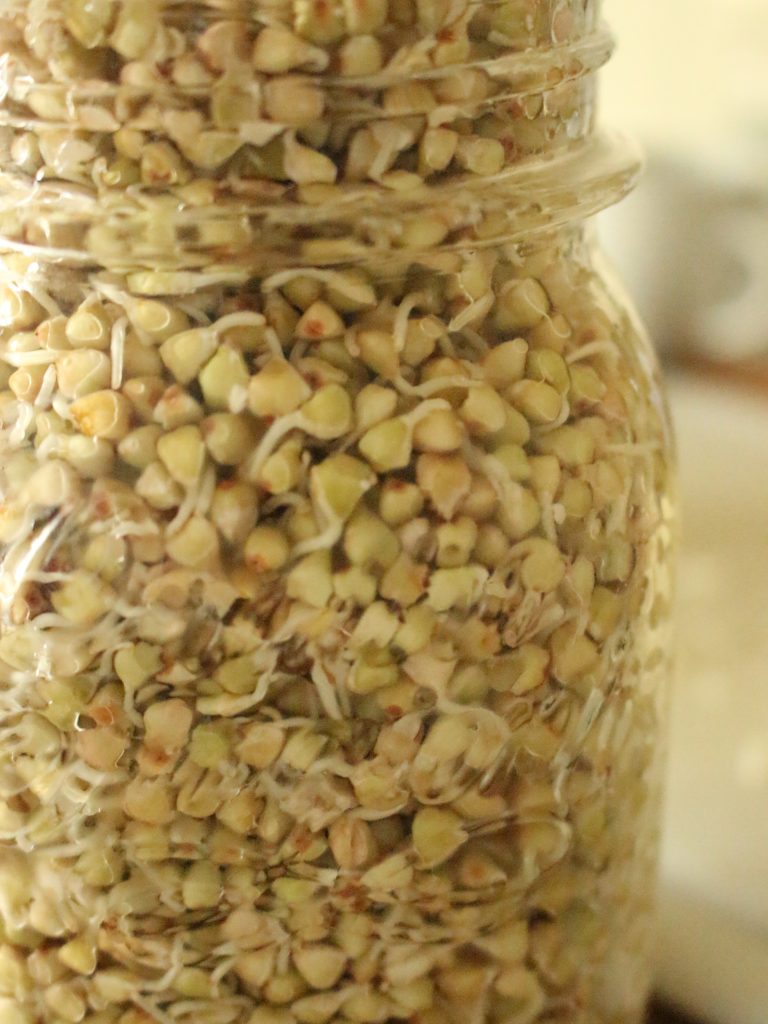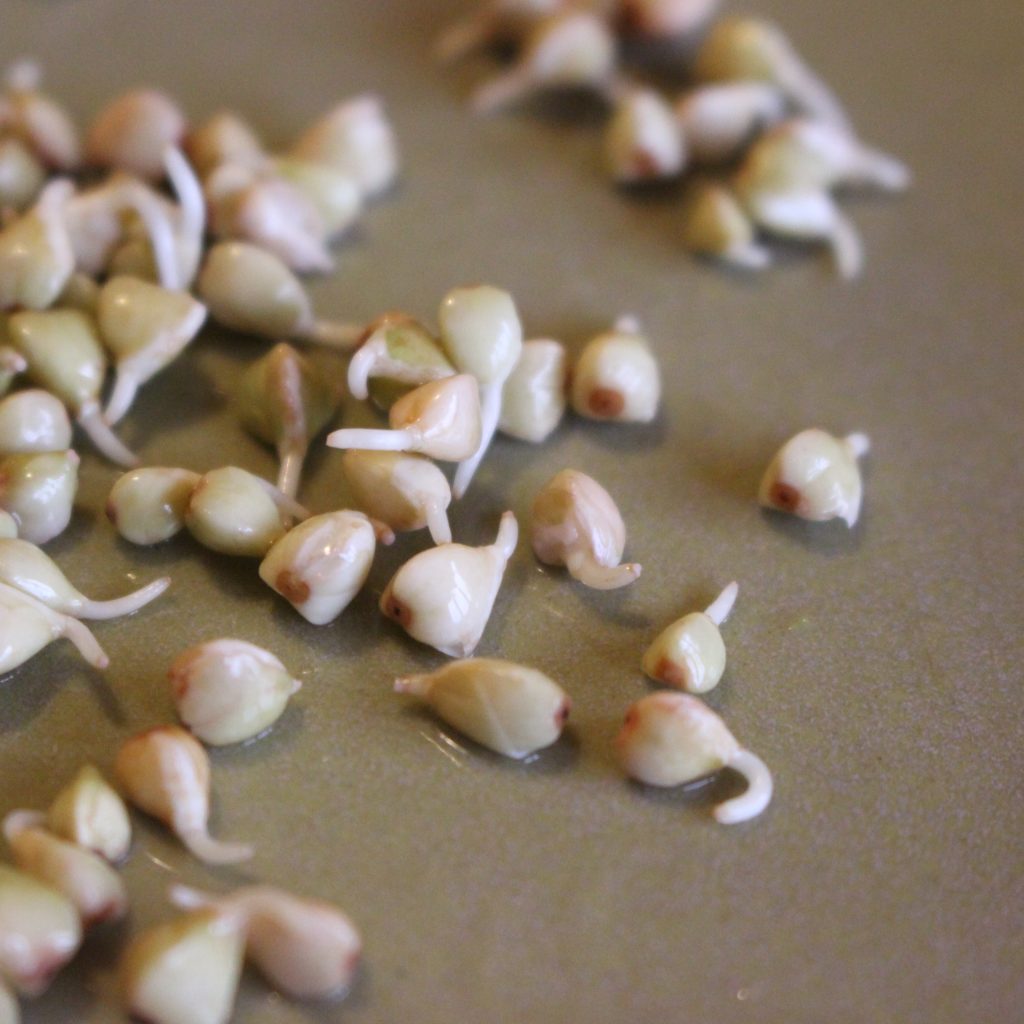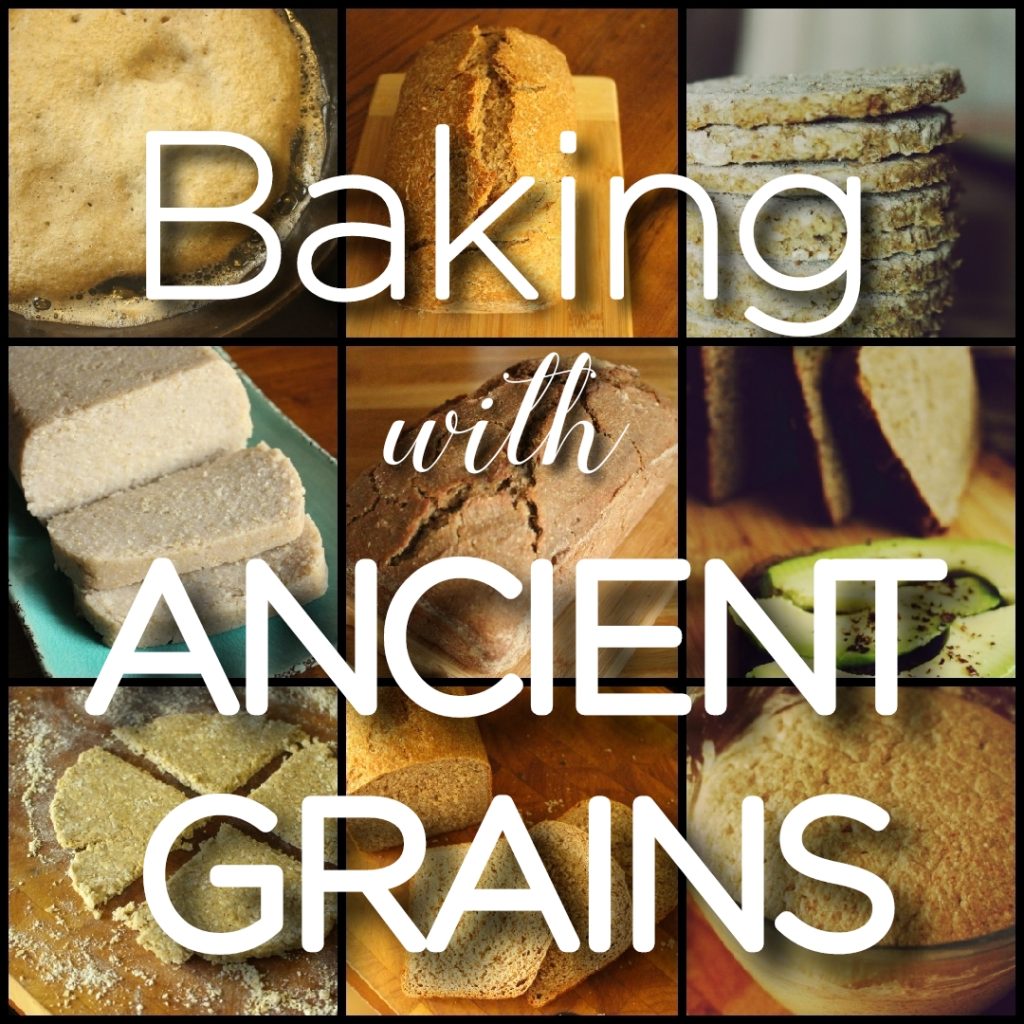As well as being a delicious, gluten-free grain, buckwheat is full of B vitamins. It contains B1, B2, B3, B5, B6 and B9. And for even more nutrient-density, if you sprout the buckwheat the levels of those vital B vitamins increase.
We need B vitamins for so many things, including a healthy nervous system, to stave off anxiety and for good sleep.

I regularly sprout buckwheat. It is an easy process – although it takes 2 to 3 days, the hands on time needed is just a couple of minutes, twice a day. Here’s how:
How to Sprout Buckwheat (for increased vitamin B content!)
What you will need:
The ideal set up for sprouting grains is a large mason jar, some gauze and an elastic band – my method below uses these. If you do not have these, you can sprout your grains in a bowl but when it comes to draining and rinsing you will need to use an additional sieve/colander.
Process:
- Put your buckwheat in a large mason jar and cover with ample water (at least twice as much as the buckwheat). Cover the mason jar with a square of gauze and secure the gauze to the rim using an elastic band.
- Leave to soak for 24 hours.
- Drain the buckwheat by tipping the jar up over the sink and allowing the water to run out.
- Rinse the buckwheat three or four times by refilling the jar with water, agitating a little and then allowing the water to drain out.
- Invert the jar of drained buckwheat and leave it at a 45° angle so that any residual water can escape (you can do this by resting it on a draining rack or by leaning the jar, upside-down, inside a bowl). Leave the grains 12 hours.
- After these 12 hours, again rinse and drain the buckwheat three or four times, replacing the jar in its upside-down 45° angle afterwards.

- From 24 hours onwards you should start to see little sprouts appearing on your buckwheat grains. I usually wait until these are between 2 and 4 mm in length.
- When you are ready to use your buckwheat, rinse and drain it well.
FAQS
How can I use sprouted buckwheat?
You can use these sprouted grain wherever you’d use unsprouted buckwheat. At the end of the sprouting process, the grains are wet and can be eaten in salads, added to smoothies, or blended with more water and made into pancakes (check my recipe for sprouted, fermented buckwheat pancakes) or a smooth porridge. If you dry the groats (which can be done in a dehydrator or low oven), they make a crunchy cereal or can be used in the Russian recipe Kasha.
My sprouts are done, but I’m not ready to use them!
Not a problem! If you’re not ready to use this buckwheat, you can store it in the fridge for a few days (just make sure you rinse it thoroughly once a day). It will continue to sprout, but not as quickly.
How can I store sprouted grains?
Unused grains can be stored in the fridge in the jar they were sprouted in. Rinse them daily. You can also dry the sprouted grains in a dehydrator or low oven. Once fully-dry, they will keep, in a sealed container, for many months.
You might also like:
Sprouted, Fermented Buckwheat Pancakes
7 Delicious Ways to Use Millet in Your Kitchen

Bring ancient grain baking into your kitchen!
Download my free 30-page guide with five healthy and tasty 100% ancient grains recipes.


Thanks for the article!
hello
thank you ! looks great. after they have sprouted how can you cook them?
Hi Angela,
I like to use them in pancakes. The link to the recipe is in the article: https://ancestralkitchen.com/2023/03/21/sprouted-fermented-buckwheat-pancakes/
Other than that, they are lovely in a bread dough or dehydrated as a cereal.
Thanks,
Alison
Buckwheat sprouting sounds so much fun! The increased B vitamins contribute to my overall well-being and support my demanding physical routine. It’s a simple yet powerful addition to my nutrition regimen and supplement routine.
hey, what is your source of it having B12? can you add it please.
As I state buckwheat contains B vitamins and sprouting increases those: https://www.google.com/search?q=Vitamin+b+content+sprouted+buckwheat&sca_esv=0f2da4589a5603d0&sxsrf=AE3TifPw5PzDZlZZjD_Z1wSqPVXciLJKbA%3A1756891157921&source=hp&ei=FQi4aP2INs3OhbIP3_Gw4Q8&oq=Vitamin+b+content+sprouted+buckwheat&gs_lp=EhFtb2JpbGUtZ3dzLXdpei1ocCIkVml0YW1pbiBiIGNvbnRlbnQgc3Byb3V0ZWQgYnVja3doZWF0SABQAFgAcAB4AJABAJgBAKABAKoBALgBA8gBAJgCAKACAJgDAJIHAKAHALIHALgHAMIHAMgHAA&sclient=mobile-gws-wiz-hp#cobssid=s
Many companies make vitamin b capsules from sprouted buckwheat,for example: https://return2.health/biotrace-phyto-b-plant-based-vitamin-b-complex